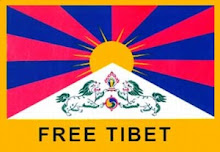
 «[…] Nato a Matadi nel 1930, [Joseph Kabaselé] frequenta i corsi di musica dei cori cattolici, come quasi tutti gli artisti del Congo belga. […] Bocciato in terza media per cattiva condotta, nel 1949 l’adolescente Kabaselé entra a far parte di un gruppo vocale, La voix de la concorde, poi si lascia alle spalle le canzoni religiose per dedicarsi alla rumba afrocubana, uno stile musicale ricco di virtuosismi e più in sintonia con il futuro che immagina per sé.
«[…] Nato a Matadi nel 1930, [Joseph Kabaselé] frequenta i corsi di musica dei cori cattolici, come quasi tutti gli artisti del Congo belga. […] Bocciato in terza media per cattiva condotta, nel 1949 l’adolescente Kabaselé entra a far parte di un gruppo vocale, La voix de la concorde, poi si lascia alle spalle le canzoni religiose per dedicarsi alla rumba afrocubana, uno stile musicale ricco di virtuosismi e più in sintonia con il futuro che immagina per sé. Tra il 1950 e il 1960 la musica dei due Congo (Congo Brazzaville e Congo Léopoldville) vive un momento cardine della sua storia. Nelle capitali e su entrambe le rive del grande fiume collegate dal traghetto nasce una musica che aggrega danze e canti rurali tradizionali, ritmi dell’Africa occidentale (high-life) o europei (come la polka pizzicata), influenze di fanfare dei coloni e canti di cori religiosi. I gruppi si moltiplicano intorno agli spacci di bevande, i congo-bar, e nasce un’industria musicale. L’elettrificazione degli strumenti, l’influenza del jazz e della musica importata dai Caraibi fanno nascere il famoso crogiolo musicale dell’Africa centrale, la cui figura di spicco sarà proprio il «Tino Rossi congolese».
In questo contesto, la nascita dell’orchestra African Jazz, dove Kabaselé ha coinvolto i suoi amici d’infanzia, rappresenta l’atto fondatore di un’estetica nuova: l’orchestra sarà il simbolo del cambiamento radicale della musica, ieri ampiamente legata a rituali collettivi, oggi finalizzata all’intrattenimento. L’importanza degli African Jazz consiste nel fatto che portano alla luce i gusti latenti di un pubblico cittadino in rotta con le abitudini di campagna, esprimono il multiculturalismo delle etnie presenti nella capitale e rielaborano le influenze straniere, in particolar modo quelle cubane (rumba, pachanga, cha-cha-cha), di cui Kabaselé è appassionato. […]» (Frank Tenaille, Lo swing del camaleonte, Epoché, pp. 17-18)
 «Most of the great Afropop styles have grown out of a joining of urban and rural ideas, of indigenous roots and foreign borrowings. The story of Congolese pop music provides a complex and powerful example. By the closing years of the Belgian Congo, the city of Leopoldville (today's Kinshasa) was a place where city boys plucked out highlife songs on box guitars, phonographs and radios played the latest mambo and son hits from Cuba, and people from deep in the Congo's remote, culturally rich interior came to seek opportunity. Pop bands mainly existed to entertain the white elite, and played imitations of foreign music. The Cuban music, with African (including Congolese) rhythmic ideas at its heart, was naturally familiar and attractive to local musicians and listeners. So when musicians in Leopoldville began to make electric pop music for themselves, that music provided an obvious starting point.
«Most of the great Afropop styles have grown out of a joining of urban and rural ideas, of indigenous roots and foreign borrowings. The story of Congolese pop music provides a complex and powerful example. By the closing years of the Belgian Congo, the city of Leopoldville (today's Kinshasa) was a place where city boys plucked out highlife songs on box guitars, phonographs and radios played the latest mambo and son hits from Cuba, and people from deep in the Congo's remote, culturally rich interior came to seek opportunity. Pop bands mainly existed to entertain the white elite, and played imitations of foreign music. The Cuban music, with African (including Congolese) rhythmic ideas at its heart, was naturally familiar and attractive to local musicians and listeners. So when musicians in Leopoldville began to make electric pop music for themselves, that music provided an obvious starting point.
Greek-run record labels (Ngoma, Olympia, and Opika) were the first to produce local records during the 1940s. But by the time African labels, Loningisa, and later Veve, entered the game, something had happened to the music. The Cuban piano parts had been adapted to guitars, and in the process, the cycling, polyrhythmic qualities of traditional Congo music, especially that of the sanza hand piano, had changed the colour of the guitar parts. Gradually, guitar would emerge as the dominant melodic and harmonic instrument in Congo bands. The biggest bands in the 1970s and 80s would typically feature three guitars, and sometimes as many as five, all playing different, interlocking parts.
Vocalists sang in Lingala, a composite language developed during the years when the Belgians used labourers of diverse ethnicities to build a cross-continental railroad. The language had a warm, liquid flow, and the singers were excellent soloists and harmonists. When the Belgian Congo became an independent, nation in 1960, the new capital, Kinshasa, was alive with a beautiful, new hybrid sound unlike anything else in the world.
Joseph Kabasele (a.k.a. Le Grand Kalle) and his band African Jazz heralded independence with the song "Independence Cha Cha." Kalle had a sweet, pure solo voice that inspired many imitators. But major credit for the band's massive popularity also goes to guitarist Nicolas "Dr Nico" Kasanda, a descendent of the Luba people of central Zaire like many of Congolese music's great contributors. […]» (Afropop, read the full story)
«Joseph Kabasele Tshamala was born 1930, Matadi, Zaire. The father of modern Zairean music, Kalle's earliest musical experiences were as a member of the church choir in his home town of Matadi. Moving to Kinshasa in 1950, he worked with Orchestre De Tendence Congolaise, a band that specialized in acoustic polka and mazurka rhythms, derived from records brought to the country by colonial settlers. In 1953, keen to develop a genuinely Congolese style, he formed African Jazz, based on the Afro-Cuban tradition and in particular the rumba, samba and cha cha, all played in a distinctively Congolese fashion. Over the years, the group included many of the future stars of Zairean music, including Dr. Nico and Tabu Ley, and provided a training ground for the next generation of Zairean musicians.» (PanafricanAllstars)
Link in comments











3 comments:
http://sharebee.com/dc86b8f9
thanks
Dear Radu. I tried the link but Sharebee.com is not working. It have been out for a long time now. Can you please help all of us with a additional server?
Best Regards
LeFranck
Post a Comment